Greenhouse Tomato Pollination with Bombus impatiens in Manitoba
Bumble bees are used for the pollination of tomatoes in greenhouses. Bombus impatiens is a species of bumble bee that has been researched and found to work well for this purpose. The bee is commercially available and can be purchased from various suppliers. Bombus impatiens is not native to Manitoba, therefore, it’s important to know the introduction risks and recommended guidelines.
See the bee supplier’s instructions for proper colony position and placement, timing of use, stocking rate schedule, temperature and humidity greenhouse conditions. The number of bees or hives needed may depend on the type and variety of tomato being grown.
Introduction Risks
The introduction of non-native species like B. impatiens can upset the balance of the native ecosystem and have a particularly negative effect on the dozens of bumble bee and other native and managed bee species in the province. These impacts can include foreign disease transmission, competition for nectar and pollen, and other issues. Therefore the following guidelines are recommended.
Recommended Guidelines1
- Movement of Bombus impatiens is approved for use in greenhouse pollination only.
- All bees must be shipped in containment hives fitted with fixed queen excluders to prevent the escape of queens into the greenhouses or the natural environment.
- The service life of each colony must be limited to 8 weeks after date of shipment to prevent the escape of drones. After this time, hives must be destroyed by freezing solid and then incinerated.
Pollination Activity
A colony of B. impatiens bumble bees in a box or hive (Figure A) can be purchased and placed in a greenhouse to pollinate tomato flowers. When a B. impatiens worker visits the tomato flower, it grasps the stamens with its mouth (mandibles) (Figure B) and buzzes or shakes the flower by activating its flight muscles. This causes pollen to fall out through pores in the anther of the stamen and onto the bee. Tomato flowers do not produce nectar but a hive comes with an amount of sugar syrup (inside the box) for the carbohydrate needs of the colony.
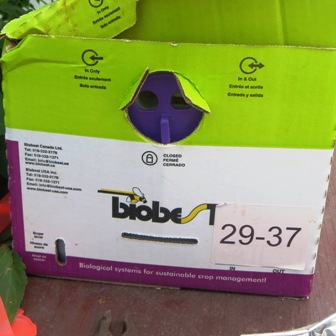 Figure A |
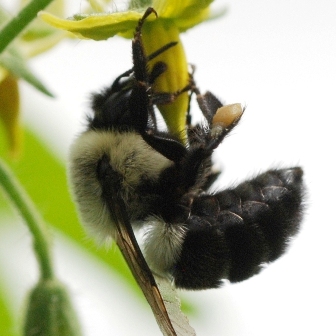 Figure B |
Grasping of the stamens by the bee changes the colour of the stamens from yellow (Figure C) to brown (Figure D), and is sometimes referred to as “bruising”. It takes 1-4 hours after a bee visit for the stamens to turn brown. A brown flower is an indication that it has been visited by a bee at least once. A single visit may result in pollination of the flower, however, multiple visits often result in the transfer of, and pollination with, more pollen grains, which can maximize the size and improve the shape of the tomato fruit. Monitoring the colour of flowers can help assess the amount of flower visitation and pollination activity.
 Figure C |
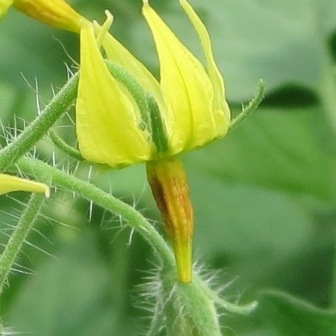 Figure D
|
Tomato flowers at various stages of development may be seen (Figure E). More flowers open as the plant grows. Pollination activity by B. impatiens generally results in good tomato production (Figure F).
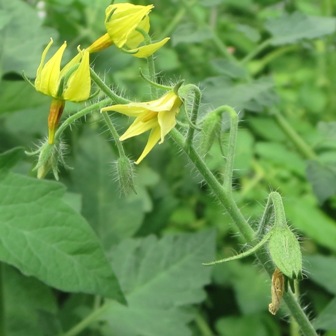 Figure E |
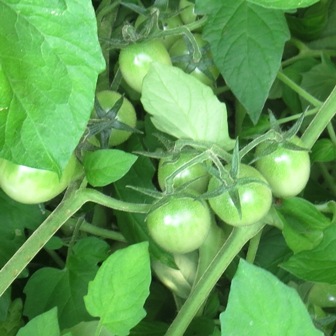 Figure F |
One way to reduce introduction risks is a completely contained and screened-in greenhouse (Figures G & H).
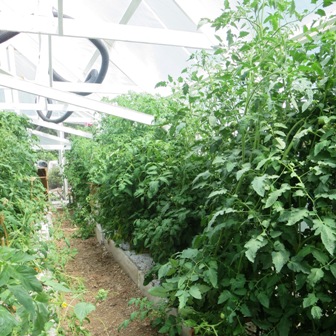 Figure G |
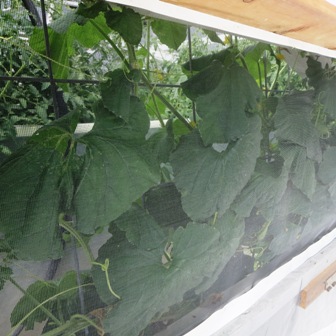 Figure H |
Bombus impatiens bumble bees can be used to pollinate other greenhouse crops as well. Honey bees generally are not recommended for use in greenhouse crop production.
For more information, contact Manitoba Agriculture and Resource Development at crop@gov.mb.ca.
References:
1 Adapted from CFIA import conditions on Bombus impatiens.
- Koppert Biological Systems, www.koppert.com
- Morandin, L.A., T.M. Laverty and P.G. Kevan. 2001. Bumble bee (Hymenoptera: Apidae) activity and pollination levels in commercial tomato greenhouses. J. Econ. Entomol. 94: 462-467.
- Ontario Ministry of Food and Rural Affairs. Growing greenhouse vegetables. Publication 371.
- Singh R., A.L. Levitt, E.G. Rajotte, E.C. Holmes, N. Ostiguy, D. vanEngelsdorp, et al. 2010. RNA viruses in hymenopteran pollinators: Evidence of inter-taxa virus transmission via pollen and potential impact on non-Apis hymenopteran species. PLoS ONE 5(12): e14357.

